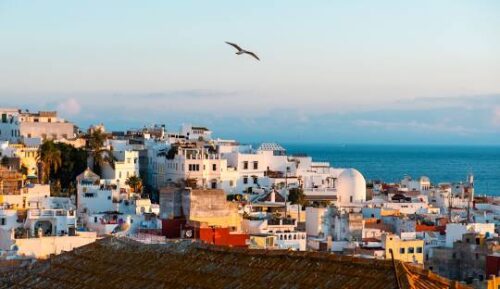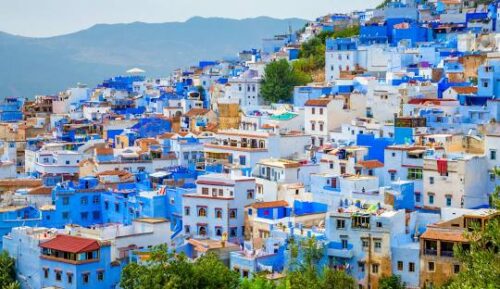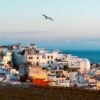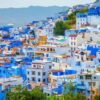The town of Chefchaoen was founded in 1471 as a small fortress by Moulay Ali Ben Moussa Ben Rached El Alami. It was initially established to fight the Portuguese invasions of northern Morocco. Over the centuries, Chefchaouen served as a safe haven for Moorish exiles from Spain, which influenced its architecture and cultural panorama profoundly.
In the 20th century, the town remained relatively isolated until it opened up to tourism in the 2000s, which brought a new wave of cultural exchange and economic opportunity. Chefchaouen is not just known for its blue walls but also for its rich tapestry of cultural heritage. The blue-glazed houses and streets offer more than just aesthetic pleasure.
They reflect the town’s historical and religious beliefs. Some say the blue is painted to keep mosquitoes away, others say it symbolizes the sky and heaven, encouraging a spiritual life. However, the most compelling explanation is linked to the Jewish teachings suggesting that the color blue of Chefchaoen reminds people of God’s power.
The town is also famous for its local crafts, particularly wool garments and woven blankets. The markets are filled with artisans who sell traditional Moroccan handicrafts, including pottery, leather goods, and intricate jewelry, often featuring designs that are specific to the North African region. Chefchaouen’s architecture is a blend of Moorish and Andalusian influences with red-tiled roofs, bright blue walls, and narrow, cobbled lanes.
The medina, or old town, is enclosed by fortress walls with several historical gates still standing as they did hundreds of years ago. Notable buildings include the Grand Mosque and the Kasbah, a fortified stronghold that now contains a museum of Moroccan arts and crafts. The natural surroundings of Chefchaoen are as much a draw as the town itself, with the Rif Mountains providing a stunning backdrop.
The region offers excellent opportunities for hiking, trekking, and photography, thanks to its lush valleys and scenic peaks. Nearby natural sites include the Rif Sebir and Talassemtane National Park, which boasts a variety of native flora and fauna, offering a tranquil escape from the hustle and bustle of Morocco’s bigger cities.
The cuisine in Chefchaoen is a delightful experience for the palate, reflecting the rich culinary traditions of the Rif region. Local dishes are typically seasoned with a variety of spices, with a particular emphasis on cumin, mint, and coriander. Goat cheese, olives, and the traditional Moroccan mint tea are obvious staples.
Tagine, a slow-cooked stew named after the earthenware pot in which it’s made, features prominently on local menus, often accompanied by freshly baked bread. As tourism has increased, Chefchaouen has faced challenges in balancing growth with sustainability. The influx of tourists has brought economic benefits but also challenges related to water usage, waste management, and the preservation of cultural identity.
The local community and authorities are increasingly aware of these issues and are actively working to promote responsible tourism that respects the town’s heritage and environment. Chefchaoen remains a jewel of Morocco, offering visitors a blend of natural beauty, historical depth, and cultural richness. It’s a place where the past meets the present in colorful harmony, and where every alleyway and blue door seems to tell a story. For those seeking a quieter, more reflective travel experience, Chefchaouen provides a perfect blend of isolation, beauty, and warmth, making it a truly unique destination within Morocco.









Reviews
There are no reviews yet.